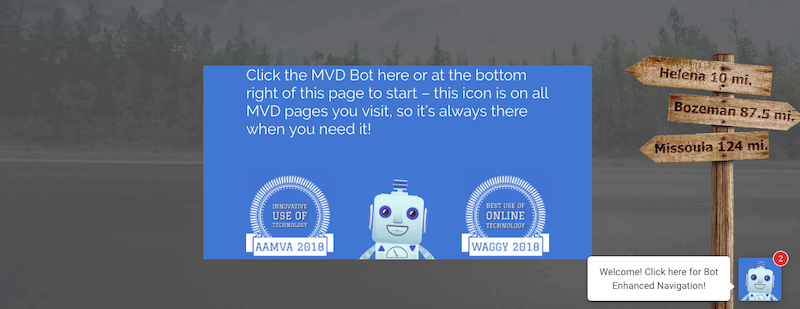
Notoriously long Department of Motor Vehicles (DMV) lines emblematize inefficient and ineffective government. In fact, the DMV has become the name brand of bad bureaucracy, much like Kleenex is to tissues or Coke is to soda. As such, you’ll see it frequently referenced in articles – including this one.
But in this story, there’s a different tale to be told – not one of thumb-twiddling wait times but one of true citizen-centric innovation and the difference one employee can make. Levi Worts, Public Information Officer for the Montana Department of Justice, Motor Vehicle Division (MVD), began working as a technical writer, meaning he didn’t play an upfront and personal role in customer service. But working in a back office in the Bozeman Driver License Station, he heard weekly tirades from customers fed up by the website’s accessibility – or lack thereof.
“They were so frustrated with the experience of trying to get information that they were driven to the point that the second they were in the door, they were yelling at the people that they could see,” Worts said.
Government websites are usually faceless. If you’re lucky, you’ll see drop-down menus of obscure subjects in governmental legalese and inoperable search bars. If you’re not, you’ll be stuck with a site map and links to nowhere. It’s not uncommon to see a reference of “as per U.S. Code” or “the Freedom of Information Act (FOIA).” The MVD website was no exception.
While obscure terms and clunky sites might be rudimentary for governmental employees, for most citizens, they’re alienating, Worts said.
Tired of hearing the rants, Worts decided to solve the problem as he knew how – not with intense coding or overhauls, but as a technical writer.
“Every time everybody hears that I’m a writer by training, by degree, they’re kind of taken aback by it,” Worts said. “You make chatbots – what? And you design websites – what? It does sound strange at first, but in fact, writing and being a writer puts you in a great position for numerous reasons to work on those types of projects.”
Worts first settled on a website redesign, but without any knowledge of coding or HTML language, he had to find a way to build quickly and produce an end product. That’s how he landed on the chatbot as the focus of the project.
Using Tars, an online chatbot-builder, Worts built the product through and through, digesting information already on the website and converting it into an easily navigable, user-friendly search format. Worts worked on the chatbot for months, building in different instances and mapping the results of 30 chatbots back to BEN, or Bot Enhanced Navigation, which is the central chatbot navigation tool.
He took a series of Udemy classes to learn the basics of web design and familiarized himself with content creation products. He developed his own MVD stylebook to ensure consistency in the chatbot. He would rewrite, build in a feature and do the same again. This pattern continued for five months.
There was no testing or official piloting process, but once it was ready, the redesigned website, captained by BEN at the opening menu, launched. That wasn’t the end, though. In fact, it was just the beginning. A feature that allowed customers to rate the chatbot from one to five stars flooded Worts’ inbox with feedback and recommendations – which for the next two months, he fine-tuned in immediate response.
If you go to the MVD website now, it is no longer faceless. You’re greeted by BEN, proudly flaunting the badges of government’s “Best Use of Online Technology” and the “Innovative Use of Technology” for motor vehicle administrations. BEN can direct you where to go to get a replacement driver’s license and what documents to bring, or the chatbot can help schedule you an appointment.
BEN has had over 500,000 interactions, and the Montana Real ID website, an extension of MVD’s redesign that is dedicated to ID services, has seen 60 percent of visitors receive information from its chatbot. The websites themselves are incredibly intuitive and easy to use, led by a simple extra project that a technical writer – with no coding experience or computer science expertise – took on.
“All I really did to build this chatbot was open my doors – listen to people talk, which seems so simple,” Worts said. “But it was incredibly important to the process because that was my direct line of communication with the audience.”
This article is an excerpt from GovLoop’s recent guide, “Intelligent Innovation: Tech Trends Taking Root in State and Local Governments.” Download the full guide here.





Leave a Reply
You must be logged in to post a comment.